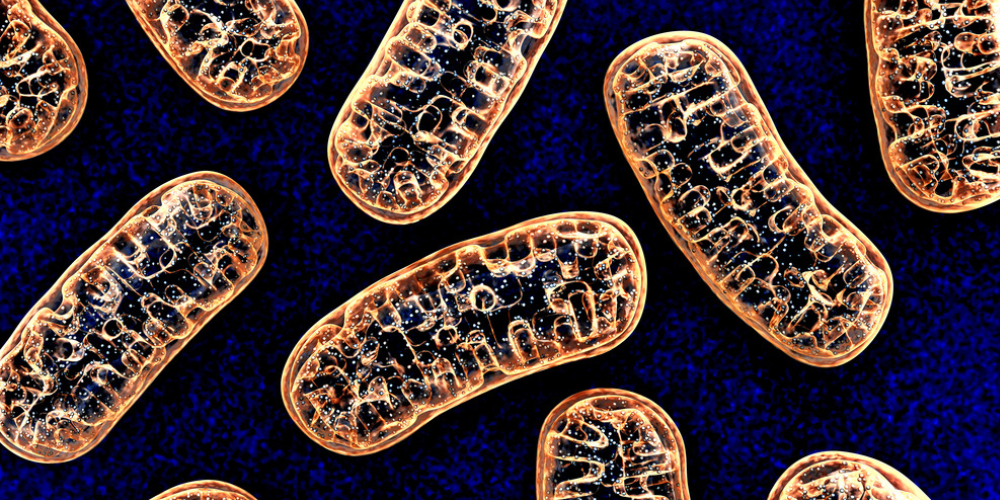"Mitochondria are the powerhouse of the cell"
This is the sentence that everyone has heard while learning about these organelles in biology class.
And it is true: within mitochondria takes place the main chemical reaction by which our body obtains energy. This is why they are such important organelles.
Mitochondrial dynamics
The amount of mitochondria needs to be closely controlled to ensure adequate energy production. Two processes are responsible for this: mitochondrial fusion (two mitochondria fusing together into one) and mitochondrial fission (one mitochondrion splitting into two). Both processes together can be called mitochondrial dynamics. A balance between these processes is necessary to keep a healthy population of mitochondria in cells. Since neuronal cells require large amounts of energy and are lengthy, they are particularly sensitive to alterations in these processes. Thus, mitochondrial dynamics is really important in neurons, and in axons (i.e. most elongated part of the neuron) in particular.
The protein that is possibly responsible for mitochondrial fission is GDAP1 (ganglioside-induced differentiation associated protein-1). We know that GDAP1 plays an important role in neuronal development, but its role in mitochondrial fission is not completely defined yet. For mitochondrial fusion, on the other side, the key protein is OPA1. OPA1 is necessary for mitochondrial metabolism in zebrafish and is also necessary for the appropriate development of zebrafish embryos.
The relationship between mitochondrial dynamics and neuropathies
As we have stated, both proteins have an important paper in development.
In fact, mutations in the genes that produce them have been implicated in many neurodegenerative disorders and disorders of the peripheral nerves such as, Charcot-Marie-Tooth disease (CMT), early-onset and progressive dominant optic atrophy or hereditary sensory and autonomic neuropathy. It has also been hypothesized that alterations in these genes can cause small-fiber neuropathy (SFN).
To investigate the relationship between mitochondrial dynamics proteins and neurodegenerative disorders, Eijkenboom and colleagues conducted the present study.
They developed knockdown zebrafish mutants for GDAP1 and OPA1 (i.e. zebrafish that lacked these proteins) and tested what the absence of the proteins represented for mitochondrial morphology, nerve number, and temperature-related activity.
ZebraBox and Zebralab, perfect for zebrafish evaluation
To evaluate the response of the larvae to temperature, the larvae were studied using a ZebraBox system. The plate containing the larvae was placed in the ZebraBox and after 30 minutes in the dark at 28.5°C, the experiment started. They first recorded larval activity for 10 minutes at 28.0°C, after which they increased the water temperature until a maximum of 36.5°C for the GDAP1 mutants and 35.8°C for the OPA1 mutants. ZebraLab software automatically determined the size of the larvae and recorded the movement of the zebrafish to determine their activity (number of pixels that change from one frame to the next). The
ZebraBox is perfect for zebrafish behavioral studies. It offers controlled experimental conditions and reliable results for up to 96 individuals at the same time (even more if multiple ZebraBox apparatus are used at once). ZebraBox provides long-term monitoring without compromising experimental conditions thanks to its integrated illumination, including infrared system, and water flow system. Moreover, water temperature can be perfectly controlled because, as opposed to other systems, the ZebraBox lighting system is heat-free.

Absence of GDAP1 alters pain sensitivity and reduces the number of sensory neurons
With this experiment, the team discovered that wild-type zebrafish (i.e. fish without any mutations, used as a control to compare to) increased their swimming activity as the temperature rose. In GDAP1 mutants this response was very reduced, while in OPA1 mutants the response was similar to wild-type zebrafish.
Further examinations indicated that the absence of GDAP1 in zebrafish decreased the number of sensory nerves as well as the temperature sensitivity. Surprisingly, however, mitochondria appeared to be normal. A possibility was that the changes in mitochondria were so subtle that they remained undetected. Nevertheless, the role of GDAP1 in fission and mitochondrial formation must be more complex than thought.
The decreased temperature sensitivity found in zebrafish indicates, based on similarities in structures between zebrafish and mammals, that pain perception is a
altered in GDAP1 mutants.
The discoveries relating GDAP1 with altered pain sensitivity and decreased amount of sensory neurons remind of the symptoms of SFN, thus, possibly indicating a role of the protein in the development of SFN. GDAP1 mutants, present a developmental defect possibly caused by energy deficits as a result of altered mitochondrial distribution.
Opposite to the results obtained for GDAP1, OPA1 deficiency did not cause any decrease in the number of sensory neurons or an effect on temperature sensitivity. The results, thus, suggest that a loss of OPA1, a key protein for mitochondrial fusion, has no effect on sensory neuron development at an early developmental stage.
In conclusion, the study demonstrated that GDAP1, a key protein for mitochondrial fission, has an important role in the development of sensory neurons. Its absence leads to characteristics that remind of SFN in zebrafish . Unexpectedly, however, the absence of OPA1 (responsible for mitochondrial fusion) has none of the effects attributable to GDAP1 absence. The findings demonstrate an impaired development in the absence of GDAP1 but, surprisingly without any defects for mitochondrial fission. The apparent normality of fission mechanisms may be due to a failure to study mitochondria in the developing neurons or because other mechanisms may account for mitochondrial fission.
First steps for the future of neuropathies treatment
The relationship discovered between proteins responsible for mitochondrial dynamics and SFN has an important repercussion for the future. These proteins and the genes that produce them may be future therapeutic targets for the treatment of neurodegenerative conditions, and SNF in particular. Moreover, mutations in genes involved in mitochondrial dynamics could be an important screening tool for SFN.
References
Eijkenboom I, Vanoevelen JM, Hoeijmakers JGJ, et al. A zebrafish model to study small-fiber neuropathy reveals a potential role for GDAP1. Mitochondrion. https://doi.org/10.1016/j.mito.2019.01.002





